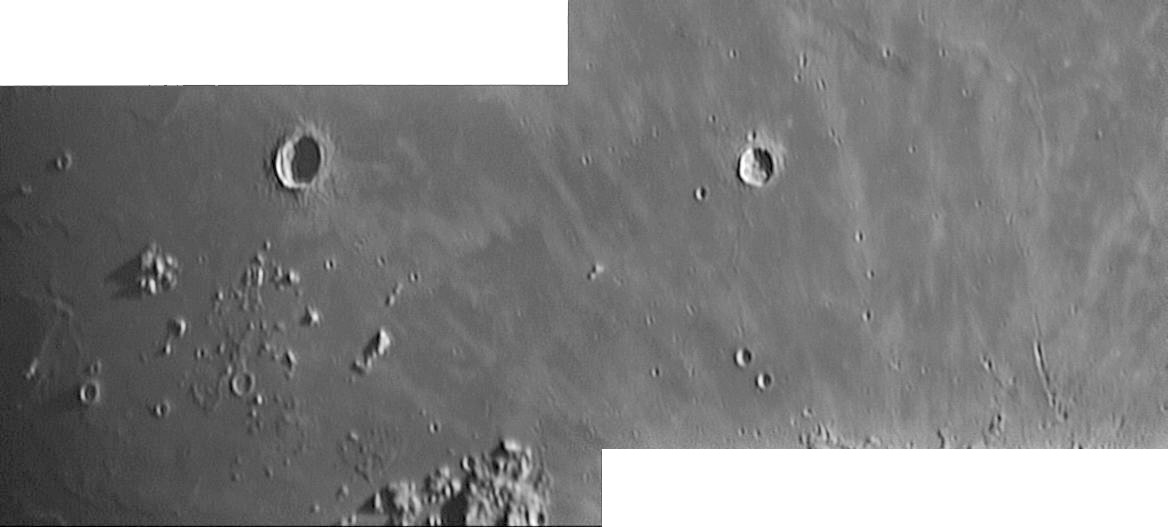
image by [mailto: Achille Giordano]
What discipline it takes to image the rays of Copernicus rather than the crater itself! With this view, Achille focuses our attention on an area 400-500 kilometers northwest of Copernicus where the smooth lavas of western Mare Imbrium made a dark canvas to record the incoming debris. The craters Pytheas (diameter 28 km) and Euler (20 km) provide scale and landmarks. Relatively young rays - these are about 900 million years old - are bright and often are nearly linear streaks radiating from their source (examples at right side of image). Sometimes a series of rays start at about the same distance from their source, making a perpendicular ray arc (center left). These different types of rays must be made by trains of rocks that fly in radial lines or concentric ones. It must mean something that the radial rays have secondary crater pits along the rays, and the concentric arcs seem to have pits at their starting points. Of course, after another few hundred millions of years the brightness will have faded away and this will simply be another irregularly pitted mare surface.
Technical Details:
June 6, 2006. ETX 125 Mak f/15 + 2X Barlow Apo + IR Cut On + Phillips Toucam Pro, mosaic of 313 frames.
Related Links:
Rükl chart 20
You can support LPOD when you buy ANY book from Amazon thru LPOD!
COMMENTS?
Click on this icon File:PostIcon.jpg at the upper right to post a comment.



